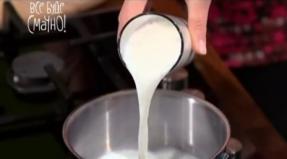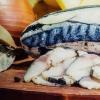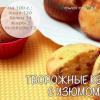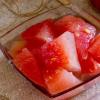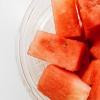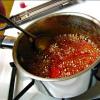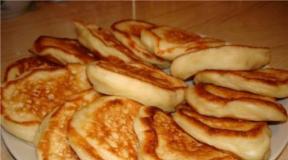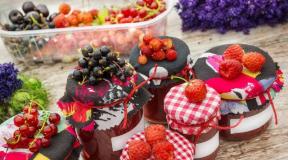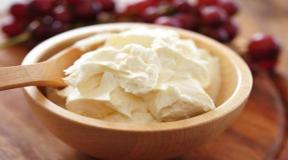French cheese with white mold. White mold cheeses
12:34
Blue cheese is a product of the aristocracy, for the production of which the domesticated types of spores Penicillinum camamber (white mold) or Penicillinum roqueforti (blue) are used. There is also orange, which is obtained by washing with white sea water or wine.
Mold cheeses have an unusual delicate flavor. There is a limited range of this product on the Russian market due to its high price. The most common blues are German Dor Blue, Italian Gorgonzola, British Stilton and French Roquefort. Camembert and Brie are also popular cheeses with white mold.
Is blue and white cheese good for you, should you include it in your family or personal diet? Let's figure it out!
How to choose a good one and check the quality
Quality blue cheese should only be purchased from trusted stores or supermarkets. The blue varieties must be visible in section.

White-mold cheeses are often sold in small packages. When choosing a product, you need to pay attention to the following factors:
-
Smell. A product with a blue mold smells pungent and strong, with a mushroom tinge. With white, it has a weak, delicate, barely perceptible mushroom aroma with a mossy aftertaste.
A strong ammonia odor indicates improper storage conditions or an expired shelf life, which should not exceed two months.
- Composition, which should include only milk (fresh or sour), enzymes for cheese production, penicillin bacteria and salt. The presence of dyes, preservatives and other food additives means that the product is counterfeit.
- Taste. It should be clean, leaving a pleasant aftertaste after tasting. A quality product melts in the mouth, has a delicate texture without dry and hard inclusions.
- On the cut, the curd mass must be solid, no holes. The latter mean a gross violation of technology in production.
- High-quality cheese is elastic to the touch, a little springy.
You should also pay attention to the quality of the mold.... White is a delicate white fluff or crust that covers the surface of the curd. The inside of such a product, as a rule, remains white. The exception is Brie Noir in a pink shade, but it is unlikely to find it on the shelves of Russia.
Blue varieties have marbled blue or turquoise blotches throughout the cut. Continuous mold throughout the cheese mass means a solid age of the product. Eating it in food is not recommended.
Composition, calorie content per 100 grams, nutritional value and glycemic index
Most cheeses, including moldy ones, are made from fatty cow's milk. Homemade - from whole, and industrial - from boiled. A number of elite, spicy-tasting blue cheese aristocrats are made from. For example, Tanguy, Picadon, Chabichou-du-Poitou. Roquefort is produced from sheep.
The nutritional value of the entire product range depends on the fat content and quality of the original milk. However, it was found that the average calorie content is approximately 350 kcal / 100 g.
All blue cheeses contain:
- milk fat - 30 g / 100 g;
- proteins - 20 g / 100 g.
There are no carbohydrates in the product. This means that the glycemic index is zero, that is, all types of cheese delicacies with mold can be safely enjoyed by people suffering from it.
Also, these products contain essential amino acids:
- valine;
- arginine;
- histidine;
- tryptophan.
These substances cannot be synthesized by the human body on its own. They must enter it with food. Valine and histidine in combination with milk fat have a strong regenerative effect. Capable of rejuvenating body tissues.
Histidine and tryptophan are involved in the synthesis of the hormone serotonin, without which the emotional life of a person becomes dull.
Cheese elite is distinguished by a high content of such microelements as (530 g / 100 g) and (390 mg / 100 g). They are completely absorbed, since the composition of the product contains another magic compound - lecithin, which balances the nervous system and has a beneficial effect on digestion.
When considering the composition, do not forget about the penicillin that mold produces. There are few vitamins in blue cheeses. The most valuable of them is K, which promotes blood thinning and has a wound-healing effect.
On the pages of our site, you will also learn a lot of interesting things about, as well as the rules for choosing a quality product!
Health Benefits
Thanks to the presence of penicillin, all mold aristocrats have anti-inflammatory effects.

All cheeses are very healthy, but thanks to cultivated fungi, they acquire the following beneficial properties:
- activate the absorption of calcium;
- promote the synthesis of melanin in the skin. This helps to neutralize the harmful effects of sunlight.
- normalize bowel function, preventing flatulence and dysbiosis;
- restore hormonal balance, improve the psycho-emotional state due to the increased production of glucocorticoids secreted by the adrenal glands;
- promote rapid wound healing due to the presence of the amino acids valine and histidine;
- have a beneficial effect on the work of the heart muscle, improve the condition of blood vessels. Vitamin K and substances released by germinated mold spores prevent blood clots and increase blood flow.
It should be noted that for optimal well-being, the daily intake of cheese should not exceed 50 g.
Features of the effect on the human body
Blue cheese is especially beneficial for people suffering from lactose intolerance. These products do not contain it. But there is milk fat in combination with lecithin and essential amino acids, which have a strong tonic and tissue regenerating effect.
What is useful for adult men and women
Elite varieties, in addition to easily digestible calcium and milk fat, also contain protein, which is necessary for maintaining the health of muscles and connective tissues.

White mold varieties are rich in conjugated fatty acids that have anti-tumor properties.
An elite product is useful for women in preparation for pregnancy. when the body needs to create a supply of calcium and phosphorus.
Eating mold cheese in moderation on a daily basis also relieves PMS and prevents depression.
Men need these products for high physical and mental stress.... Tryptophan will provide inspiration, and lecithin will prevent creative burnout.
Due to its high nutritional value and expressive spicy taste, a small amount of cheese creates a feeling of fullness and comfort without burdening the stomach.
IMPORTANT! With the abuse of cheeses with mold, an increase in body weight is possible due to the high calorie content. Headaches may also appear as a reaction of the body to an excessive amount of cheese fungi.
During pregnancy and lactation
During this responsible time for women, it is strictly forbidden to eat blue cheese.... Cheese dough is a favorable breeding ground for Listeria. These pathogens can provoke the development of listeriosis in a pregnant or lactating woman.
A body with normal immunity can successfully ignore this disease. Unfortunately, during pregnancy and lactation, listeriosis can be accompanied by high fever, fever, and vomiting.
Is it harmful to the health of children
For children under 12, it is better to offer regular cheeses. The use of elite moldy varieties by babies threatens the development of listeriosis. This disease can slow down the physical and intellectual development of the child, weaken his immunity.

Listeria and their effect on the human body are still poorly understood.... Therefore, there is no guarantee that the baby will receive full treatment when infected. After 12 years, you can start teaching your child to elite cheeses to form healthy eating habits.
Better to start with Bree. It has a delicate texture and a mild mushroom aroma.
In old age
In adulthood, if possible, it is very beneficial to pamper yourself with blue cheese. These foods, when consumed in moderation, successfully fight the following diseases:
- heart failure;
- osteoporosis;
- atherosclerosis;
- age-related depression.
They also improve memory and mental performance.
Potential danger and contraindications
The main danger of mold cheeses is individual intolerance to penicillin and infection with listeria with low body immunity. You should also not eat cheese if you have the following diseases:
- fungal, including thrush;
- arthritis and polyarthritis;
- asthma and neurodermatitis.
The product should be used very carefully in case of obesity and a tendency to swelling due to the rather high salt content, especially in varieties with blue mold.
You will learn a few more interesting facts about the benefits and dangers of blue and white cheese - an exquisite delicacy - from the following video:
The product is best eaten in the evening., since calcium is absorbed by the body at night.

Many of us know that blue cheese is considered a delicacy. What is so unusual about this cheese? It turns out that real blue cheese is produced only in France.
In other countries, they also make something similar, but the best cheeses are made in France.
Blue cheese and its legend
Interestingly, there is a beautiful, romantic legend about blue cheese. Once a young boy, a shepherd, on the slope of Mount Combalu (near the village of Roquefort) sat down to have a bite to eat with cheese and bread. At this time, a beauty was passing by. The young man wanted to meet the girl and rushed after her, but her trace vanished.
Returning a few days later to the cave, he saw an abandoned cheese covered with mold. The young man tried it and was pleasantly surprised: the cheese acquired a completely new taste. So, according to legend, Roquefort cheese appeared, one of the most famous blue cheeses.
Where is blue cheese made?
 It is clear that these are just legends. But in fact, blue cheeses have a rich history. Roquefort cheese is produced in the caves of the Rouergue province, France. If you find cheese from another manufacturer on store shelves, then this is something other than an ordinary fake.
It is clear that these are just legends. But in fact, blue cheeses have a rich history. Roquefort cheese is produced in the caves of the Rouergue province, France. If you find cheese from another manufacturer on store shelves, then this is something other than an ordinary fake.
The fact is that Roquefort cheese is produced in relatively small batches, because there is not so much space in the caves, and its cost is several times higher than its analogues. It is not at all necessary that such cheeses will be less tasty than real Roquefort.
Is mold in cheese harmful?
Many unknowingly claim that mold used in manufacturing is harmful to health. This is not true. Mold Penicillium roqueforti absolutely does not harm the human body, just sounds similar to penicillin. It is one of the most important factors that give the cheese an original, incomparable taste.
Types of blue cheeses
 In addition to Roquefort, there are also varieties of blue cheese such as stilton, gorgonzola and others.
In addition to Roquefort, there are also varieties of blue cheese such as stilton, gorgonzola and others.
Blue cheese - Gorgonzola
Gorgonzola, like Roquefort, is one of the most famous blue cheese varieties. Italy is considered his homeland (or rather, the Piedmont and Lombardy regions). The two cheeses are very different in taste because Italians use sheep's milk for the production of cheese.
In addition, manufacturers also use various types of mold. If in roquefort it is Penicillium roqueforti, then in Gorgonzola it is Penicillium glaucum and two species of bacteria Streptococcus thermophilus and Lactobacillus bulgaricus. As the cheese ripens, metal rods are inserted into the mass to ensure good ventilation. The ripening time of Gorgonzola is about four months. It is known that the Gorgonzola variety is more than 200 years older than Roquefort.
The Gorgonzola has a copy, which is called Bavaria Blue.
Blue cheese - Stilton
Stilton cheese is native to England, from the counties of Leicester, Derbyshire and Nottinghamshire. This cheese is made only from pasteurized cow's milk. It is kept for at least 9 weeks.
 There are 2 types of English stilton - blue (the most popular) and less known - white stilton... Unlike other cheeses, in the total mass of cheese there are many seemingly moves made by mold.
There are 2 types of English stilton - blue (the most popular) and less known - white stilton... Unlike other cheeses, in the total mass of cheese there are many seemingly moves made by mold.
In order to get the proud name steatlon, the cheese must meet a whole range of requirements. In a real stilton cheese, there must be specific blue veins coming from the center.
Stilton cheese is considered the youngest(in comparison with the two previous varieties we are describing) it appeared relatively recently - in the 18th century.
Blue cheese - Danablu
There is also a younger cheese - danablu, which appeared already in the twentieth century. He came to replace the expensive rockfort.
Because blue cheese has a rather pungent taste and is usually served with tannin wines. Some gourmets and cheese connoisseurs tend to argue that moldy cheese is incompatible with wine, with the exception of some white wines.
What to eat with blue cheese
 Before serving, the blue cheese is warmed to room temperature. It goes especially well with fruits, vegetables, crispbreads, crackers, etc. The British eat this cheese with vegetables and fresh herbs, and also add it to soups; Danes - with bread, Italians add it to sauce and pizza.
Before serving, the blue cheese is warmed to room temperature. It goes especially well with fruits, vegetables, crispbreads, crackers, etc. The British eat this cheese with vegetables and fresh herbs, and also add it to soups; Danes - with bread, Italians add it to sauce and pizza.
Blue cheese is a great ingredient in salads, with the exception of Roquefort cheese. This elite variety of cheese is best eaten as a separate dish.
Is blue cheese good for you? Is there any use in it?
- Yes, if you don't eat it very often and in small portions... It contains phosphorus and calcium, as well as other vitamins, as well as protein and amino acids necessary for humans.
- Many nutritionists claim that moldy cheese also contains beneficial bacteria. that improve the work of the intestines.
- Turkish scientists have made a discovery, it turns out that the composition of the noble mold includes special substances that are able to protect the skin from harmful effects. sun rays. Eating blue cheese causes the substances to accumulate in the subcutaneous layer, as a result of which more melanin is produced in the body, which significantly reduces the risk of sunburn.
The first time I tried blue cheese was back in school, when exchange schoolchildren from France came to us and brought all sorts of treats. So, I just really didn't like the cheese, and the first thing that repelled was the smell. Therefore, even after a while, I walked past the shelves with moldy cheeses in stores and did not even have any idea what these cheeses were called, what types there were. My trip to France changed everything. I have matured and tastes have changed too.
The most famous blue cheese
Every time I visit a new country, I do not miss the opportunity to try something new, and to some extent I can refer myself to lovers of gastronomic tourism, although, of course, this is not the main purpose of my travels.
Having visited France, I could not help but taste the Roquefort cheese. This is blue cheese. There are many dishes that use this type of cheese. Basically Roquefort is used as:
- snack;
- dessert;
- component of salads.
 Of course, you can find a bunch of recipes where this type of cheese would be appropriate, but personally my favorite is the simplest recipe. I just love to spread this cheese in a thin layer on a fresh baguette, it makes a great breakfast. This is somehow in French, this beautiful country is immediately remembered.
Of course, you can find a bunch of recipes where this type of cheese would be appropriate, but personally my favorite is the simplest recipe. I just love to spread this cheese in a thin layer on a fresh baguette, it makes a great breakfast. This is somehow in French, this beautiful country is immediately remembered. What other cheeses are moldy
I decided not to dwell only on Roquefort and decided to try other cheeses, however, already at home. In general, there are many types of cheese, and the most popular are the following (I easily found them on the supermarket shelf):
- brie - soft cheese with white mold;
- camembert - soft cheese with a white crust;
- gorgonzola - Italian blue cheese;
- Münster - French cheese with red mold.
When choosing, be sure to look at the manufacturer, because the same Camembert of a Russian and foreign manufacturer will be different, although it may also be the case.

And if you didn't like blue cheese the first time, try again, tastes change over time. I wish everyone to find the very recipe using these wonderful cheeses that will become an integral part of your table.
Helpful0 Not very
Comments0
My romantic acquaintance with blue cheese happened not anywhere, but in Paris. At that time, the counters of domestic stores did not yet shine with a variety of delicacies, and we had to be content with “Rossiyskiy”, “Poshekhonskiy” and “Gollandskiy”. Unsurprisingly, I was delighted with real French cheese at the breakfast of an ordinary Parisian hotel.

What is the name of the French blue cheese
She brought cheese as souvenirs for relatives from that trip. I bought in an average supermarket, but the number of items in the cheese section made my head spin. Fortunately, one of my companions knew the terminology.

We left the store with the following set of French delicacies:
Roquefort is a blue cheese made from sheep's milk. A very popular cheese with characteristic blue veins and rich taste, praised even by Alexandre Dumas.
Camembert is a very soft and tender cheese, slightly viscous to the touch. Good Camembert has a uniform texture and a velvety moldy crust of white with reddish folds.
Bree is a cheese my family didn't appreciate due to its harsh ammonia-like smell. Brie is usually in the form of a tablet covered with a white mold film. Brie tastes similar to Camembert, however, it is less greasy.
It should be noted that most blue cheeses are named after their place of birth.

Not a single France
This magnificent blue cheese is produced by two regions of Italy, it is called Gorgonzola - a cow's cheese with green veins. Danish cheese Danablou, inspired by Roquefort, is eaten without special reverence. I happened to buy a decent cheese in Holland, it is called Blau Claver and is sold as a souvenir in addition to porcelain Dutch shoes.

It is impossible not to recall the economic sanctions, which gave rise not only to a lot of jokes about the hardships of life without French cheese, but also to many Russian producers of this delicacy. Today, many cheese dairies in Russia are experimenting with noble mold.
Helpful0 Not very
Comments0
The story of the birth of my love for blue cheese is not new, but you cannot erase words from a song. Like most, until a certain age, I considered such cheeses a nightmare and did not understand how "this" can be eaten. Well, at some point, I was then 26 years old, it seems, at a friend's birthday, I still had to try German "Dorblu"... Well, and then I realized that I liked him terribly. I think that in order to understand the value of such a cheese, a person must what is called “grow up”.

Blue cheese names
There are a huge number of varieties. And if I really like one variety (the aforementioned Dor-blue, for example), then from some others it just turns back. In France alone, there are hundreds of varieties, and such cheeses are produced not only in the homeland of sparkling wines. Let's say one of the most popular and well-known Danablu varieties is made in Denmark. A my favorite "Dorblu Grand Noir" is in Germany... I also know that some German manufacturers have their factories in Poland and the Baltic countries.

It is customary to divide varieties primarily by the type of mold. Namely:
- Blue mold(or "blue cheeses"). The most famous varieties: Roquefort, Danable, Gorgonzola, Dorblue.
- White mold... The most famous are brie, and Camembert... Moreover, in general, very popular varieties that can be seen on the shelves of almost any large supermarket.
- Red mold... Notable "representatives": brie noir, livado.
According to my observations, cheeses with a blue mold can boast of the greatest demand, while cheeses with a red mold are in the least demand. In this sense, my tastes coincide with most gourmets.

How to eat blue cheese
I think it's just created as a snack for good champagne or wine. Although such cheese is generally healthy (it contains many useful vitamins), it is impossible to use in large quantities, or in small quantities every day, because with a significant amount of blue cheese eaten intestinal microflora is destroyed... Yes, and usually his price is such that even if you want to, you will not really "overclock". For example, 1 kg of Dorblu variety in Moscow costs about $ 30.
Helpful0 Not very
Comments0
A trip to the supermarket is like a skillful test, because you really want to buy everything that your eyes can see. For the tastiest, prices go off scale, but I have a strict rule: do not buy cheap products. Once I bought a delicious blue cheese (I didn’t spare money), but it accidentally rolled into the bottom compartment of the refrigerator. The husband has already taken out the product and says: "Mistress, look what a beautiful mold, why translate the products like that?" I laughed out loud and asked my beloved to try the delicacy.

Gourmet blue cheeses
For us, French cuisine has been incomprehensible for several years. When expensive blue cheese appeared on the shelves, it became a sensation. Because we wildly have a product where there is mold, which means - a fungus. Moldy french cheeses highly appreciated by cooks and this product belongs to the group of blue cheeses. Each type of cheese has its name.

The most popular varieties:
- Roquefort;
- Saint-Agur;
- gorgonzola;
- Bergader;
- Danable.
And the story of the creation of this cheese is reminiscent of a story of love. According to one of the legends, a young Frenchman who worked as a shepherd was so carried away by a new passion that forgot about production, food and their duties. The cheese has grown moldy. The guy was left without food and raw materials. But he still dared to taste the cheese, the taste really liked his. It's just legend... Because the cheese that was gone has dried up and covered with a fungus, you can't eat, it is a direct threat to health.
Blue cheese is created in several stages, the mold is planted with a thin needle... The cheese product is stored in special conditions.
The taste of perfection
It is the mold that gives the cheese an unusual taste. A large portion is too cloying. The product must be combined with other ingredients... Semi-dry wine is a good example.
I advise you to cook dishes with the addition of an expensive cheese ingredient.
And here they are:
- cheese sauce;
- onion cream soup(with the addition of cheese);
- tomatoes with gorgonzola;
- warm salad with beef, herbs and blue cheese.

Believe me french cuisine- an example of skill. Try something new, because you eat regular cheese every day.
Helpful0 Not very
Comments0
The first time I tried cheese with noble mold was at the age of 10. It seemed disgusting, disgusting. Blue mold, creepy! In general, real French cheeses, carefully brought by our aunts, did not enjoy success with our relatives. But a couple of years ago I tried blue cheeses again. AND became a fan of these cheeses.

What are blue cheeses called?
Cheese makers have given the world a huge number of types of blue cheese. How many types of blue cheese there are - you can't count. And cheeses of the same kind, made in different factories and private cheese mills, also differ in taste. Today cheeses are made in Europe, America and Russia. By the way, in the villages of our country you can sometimes find farms where the locals are engaged in the production of an overseas curiosity - blue cheese. Respectively, variety names too lots of.
White mold cheeses
White mold softly envelops the crust of the product. Inside, the cheese is usually soft, sometimes almost viscous. The most famous cheeses:
- brie(nutty flavor, very soft inside);
- Camembert(my favorite white-mold cheese, similar to brie, but less noticeable bitterness);
- boulet d "aven(specific smell! May shock).
Blue cheeses
The most popular cheeses. To obtain mold, it is common to inject the fungus into the product.

Known:
- Roquefort(cheese is actively used in main dishes and desserts);
- gorgonzola(sweetish taste, very beautiful in the context);
- danablu(cooked for 2 months, tastes spicy or salty).
Green mold
The manufacturing technology is similar to the manufacturing technology of blue cheeses. The aromas are pronounced. Views:
- dor blue(cheese well-known in the USSR, spicy smell, combined with fruit, often found in the composition of pizza "4 cheeses");
- stilton(spicy cheese, pleasant aroma, made from high quality morning cream);
- saint-agur(delicate cheese due to its high fat content).
Sharp reds
Perhaps cheeses with red or orange mold can be rarely found in Russian stores. Like white, red mold forms on the crust.

You can find the following cheeses:
- livaro(spicy, interesting aftertaste);
- epuass(pungent smell, but creamy taste);
- münster(to get 1 kg of cheese, you need 8 liters of cow's milk, mild taste).
Try different cheeses. Combine as recommended with fruits or wines.
Moldy cheeses gradually moved from the category of exotic to familiar products like spiced bread or. For the present, you no longer need to go to France - just go down to the nearest supermarket. But what is hidden behind the dense snow-white crust and viscous creamy texture of the cheese?
The Physicians Committee for Responsible Medicine says the product is 70% dangerous trans fat, with the remaining 30% not a bad source. What you need to know about blue cheeses and how safe are they for the human body?
General product characteristics
Cheese with white mold is a delicate, fatty creamy pulp and a dense snow-white crust.
For the production of the product, special types of mold from the genus Penicillum are used, which are safe for the human body. The ripening period for the cheeses is about 5 weeks and can vary both ways depending on the variety and characteristics of the product. The shape of the white cheese is standard - oval, round or square.
Interesting: cheeses with white mold are considered the smallest group in comparison, for example, with blue ones. They appeared on supermarket shelves much later and retained a high value for a long time.
Popular varieties of product with white mold
Bree
 It is this type of blue cheese that has gained particular popularity. This is a soft cow-based cheese. Its name is associated with the French province, which is located in the central region of Ile-de-France - this place is considered the birthplace of the product. Bree has gained worldwide popularity and recognition. It is made in almost every corner of the planet, bringing special notes of individuality and geographical recognition. That is why it is customary to talk about the brie family of cheeses, and not about a specific product.
It is this type of blue cheese that has gained particular popularity. This is a soft cow-based cheese. Its name is associated with the French province, which is located in the central region of Ile-de-France - this place is considered the birthplace of the product. Bree has gained worldwide popularity and recognition. It is made in almost every corner of the planet, bringing special notes of individuality and geographical recognition. That is why it is customary to talk about the brie family of cheeses, and not about a specific product.
Historical background: brie has been considered a royal dessert since ancient times. Blanca of Navarre, Countess of Champagne, often sent a white head of cheese as a precious gift to King Philip Augustus. The entire royal court was delighted with the taste and aroma of cheese, so for each holiday the retinue was looking forward to another moldy gift. Henry IV and Queen Margot did not hide their love for Brie either.
The peculiarity of brie is its pale color with subtle grayish blotches. The delicate texture of the flesh is covered with a layer of noble mold Penicillium camemberti or Penicillium candidum. Most often, the product is made in the form of a cake with a diameter of up to 60 centimeters and a thickness of up to 5 centimeters. The moldy crust is characterized by a pronounced ammonia aroma, and the cheese itself gives off a slight smell of ammonia, but this does not affect its taste or nutritional properties.
Young brie has a delicate mild flavor. The older the cheese, the more pungent and spicy notes in its flavor palette. Another rule that applies to brie is that the pungency of the cheese depends on the size of the cake. The thinner it is, the sharper the product. Cheese is produced on an industrial scale at any time of the year. It belongs to the so-called universal French cheeses, since it is equally well suited for a family lunch as well as a special gourmet dinner.
Advice. For a delicate texture and a firm crust, remove the brie from the refrigerator a few hours before a meal. The optimum storage temperature is from +2 to -4 ° C.
Boulet d'Aven
 This is a French flavored cheese based on cow's milk. The name of the product is associated with the city of Aven. It was from Aven that the rapid history of blue cheese began.
This is a French flavored cheese based on cow's milk. The name of the product is associated with the city of Aven. It was from Aven that the rapid history of blue cheese began.
Initially, skimmed milk cream was used for the base of the cheese. Over time, the recipe has changed, and the main constituent is the fresh sediment of Maroual cheese. Raw materials are crushed, mixed with an abundance of seasonings (most often tarragon, cloves, and), after which they are shaped into balls or cones. The cheese crust is tinted with a special annatto plant, sprinkled with paprika and white mold. The ripening period of the cheese is from 2 to 3 months. During maturation, the crust is periodically soaked in the beer, which provides additional flavor and aroma accents.
Triangular or round pieces of cheese weigh less than 300 grams. The product is covered with a moist red crust, which consists of paprika and mold. Under it hides snow-white pulp with bright splashes of spices. The fat content of the product is 45%. The main flavor notes are provided by tarragon, pepper and milk base. Boulet d'Aven is eaten as a main course or served as a gin or red wine appetizer.
Camembert
This is a type of soft, fatty cheese. He, like most cheese products, is prepared on the basis of cow's milk. painted in a pleasant light creamy or snow-white shade, covered with a dense mold crust. Outside, the cheese is covered with Geotrichum candidum, on top of which Penicillium camemberti fluffy mold develops. The peculiarity of the product lies in its taste - a delicate creamy taste is combined with tangible notes of mushrooms.
Interesting: French writer Leon-Paul Fargue wrote that the scent of Camembert is comparable to the "smell of the feet of God" (Le camembert, ce fromage qui fleure les pieds du bon Dieu).
 Camembert is based on whole cow's milk. In some cases, a minimum amount of skim milk is included in the composition. From 25 liters of milk liquid, you can get 12 heads of cheese with the following parameters:
Camembert is based on whole cow's milk. In some cases, a minimum amount of skim milk is included in the composition. From 25 liters of milk liquid, you can get 12 heads of cheese with the following parameters:
- thickness - 3 centimeters;
- diameter - 11.3 centimeters;
- weight - 340 grams.
Hot weather can adversely affect the ripening of the product, which is why the cheese is prepared between September and May. Unpasteurized milk is poured into massive molds, left to stand for a while, then rennet is added and the mixture is allowed to curdle. During production, the liquid is stirred periodically to prevent the cream from settling.
The finished curds are poured into metal molds and left to dry overnight. During this time, Camembert loses about ⅔ of its original mass. In the morning, the technology is repeated until the cheese acquires the required structure. Then the product is salted and placed on the ripening shelves.
Important: the growth and type of mold depends on the temperature indicators of the room in which the cheese ripens. The specific taste of camembert is formed due to the combination of different types of mold and their subsequent development. If the sequence is not followed, the product will lose the required texture, crust and flavor.
Camembert is transported in light wooden crates or several heads are packed in straw. The shelf life of the cheese is minimal, so they strive to sell it as soon as possible.
Neuchatel
 French cheese produced in Upper Normandy. The peculiarity of the Neuchâtel is a dry, dense crust covered with fluffy white mold, and an elastic pulp with a mushroom aroma.
French cheese produced in Upper Normandy. The peculiarity of the Neuchâtel is a dry, dense crust covered with fluffy white mold, and an elastic pulp with a mushroom aroma.
The manufacturing technology of the nechâtel has practically not changed over several centuries of the product's existence. Milk is poured into warm containers, rennet and whey are added and the mixture is left for 1-2 days. After that, the whey is drained, mold bacteria are introduced into the vat, after which the cheese mass is pressed and left to dry on wooden racks. Neuchtel is salted by hand and left to ripen in the basement for at least 10 days (sometimes the ripening period is extended to 10 weeks in order to achieve a pungent taste and mushroom notes).
The fat content of the finished product is 50%. The crust is dry, velvety, completely covered with a uniform white mold. Neuchatel is known for its special form of presentation. Most often it is prepared and sold in the shape of a large or miniature heart, rather than the traditional oval, circle, or square.
Useful properties of the product
The specific smell and unattractive appearance hides not only a masterpiece of cheese production, but also a storehouse of benefits for the human body. The Penicillium mold that covers the product is considered noble and colossally beneficial. Why?
In cheese production, Penicillium roqueforti and Penicillium glaucum are most often used. They are added to the mass by injection, after which they wait for the maturation and growth of mold. Penicillium fights abnormal bacteria in the body, kills harmful microflora, cleanses the intestines and improves heart function.
Scientists have identified a specific phenomenon called the "French paradox". The paradox itself is that France has the lowest heart attack rate in the world. This is attributed to the abundance of red wine and noble cheese in the daily diet of the French. Cheese is actually known for its anti-inflammatory effect. It helps cleanse joints / arteries, protects them from heart attack / arthritis and improves performance.
Interesting: Penicillium slows down the aging process of the human body and, as a pleasant bonus, helps to get rid of cellulite.
The composition of cheeses with white mold includes, and calcium (Ca). All of these nutrients help maintain the health and quality of our body's functionality.
 Useful properties of cheese:
Useful properties of cheese:
- strengthening of the bone skeleton, muscular system and teeth;
- reducing the risk of developing multiple sclerosis;
- improving control over one's own psycho-emotional state, harmonizing the nervous system;
- normalization of metabolic processes;
- additional protection and strengthening of the immune system;
- control over the water balance in cells and tissues;
- increased performance, stimulation of brain cells, improved memory and cognitive functions;
- reducing the risk of developing breast cancer;
- starting the process of natural breakdown of fats.
But there is also a downside to the coin. The main component of the cheese is milk of animal origin. Scientists have proven that an adult does not need milk, and drinking plenty of fluids leads to unpleasant symptoms - acne, bowel problems, poor metabolism, allergic reactions, nausea and vomiting.
If possible, give preference to cheeses based on sheep's or goat's milk. They contain less milk sugar, which we stop assimilating when we are 5-7 years old. The main thing is not to overuse cheese. This is a fairly high-calorie product with an abundance of saturated fats, an excess of which negatively affects a person. Limit yourself to a few bites to savor the flavor, but satisfy your hunger with organic meats, vegetables, fruits, or grains.
Why is cheese dangerous?
Salt
Cheese is recognized as the most salty product. According to Consensus Action on Salt and Health, it is ranked 3rd after bread and bacon. For every 100 grams of dairy product, there is an average of 1.7 grams of salt (the daily requirement is 2,300 milligrams). The abundance of salt in the white moldy heads is well above the dosage that inhibits the growth of harmful bacteria. A constant excess of the norm of dietary sodium leads not only to violations of the body's functionality, but also to addiction.
Hormones
How do hormones get into brie or camembert? The answer is simple - through cow's milk. Cheese products also contain pus from the animal's bladder. Often, manufacturers are concerned not with the quality of the supplied product, but with their personal benefit. In this case, the cows on the farms receive injections of hormones and antibiotics instead of proper care. All these unnatural enzymes penetrate into the milk of the animal, and from there into the human body. The result is the development of osteoporosis, hormonal disruptions, prostate and breast cancer.
Formation of addiction
 According to statistics, in modern America they consume 3 times more cheese than 40 years ago. The effect of a food drug is surprisingly similar to that of an opiate - it deceives nerve cells and the stomach, forcing us to absorb the product uncontrollably.
According to statistics, in modern America they consume 3 times more cheese than 40 years ago. The effect of a food drug is surprisingly similar to that of an opiate - it deceives nerve cells and the stomach, forcing us to absorb the product uncontrollably.
Fact: People who are addicted to sugar and fat benefit from the same medications as overdose addicts.
Enzymes, which are strikingly similar to narcotic ones, are formed in the internal organs of cows, and their principle of movement is absolutely identical to hormones. The situation is aggravated by the volumes of cheese consumption. We are used to using it not only as an independent dish, but also as an addition / sauce / seasoning to the main meal.
Bacteria that threaten pregnancy
Unpasteurized milk, poultry and seafood can harbor the bacteria Listeria monocyotogenes. They cause an infectious pathology of listeriosis. Disease symptoms:
- vomit;
- pain in the muscle corset;
- chills;
- jaundice;
- fever.
All of these symptoms are especially dangerous during pregnancy. Listeriosis can cause premature birth, miscarriage, sepsis / meningitis / pneumonia in the fetus. That is why doctors recommend completely eliminating soft cheeses with white mold during pregnancy and breastfeeding.
The problem of ethical production
There are many doubts about the ethics of the production of the product. Do not be gullible about the words "organic" and "vegetarian", it is best to carefully study the composition. Most cheeses are prepared with the addition of rennet enzymes. This is the fourth section of the calf stomach. In the vast majority of cases, producers use enzymes from newly born slaughtered calves.
Important. If you want to eat vegetarian cheese, make sure that the composition contains fungi, bacteria or genetically modified microorganisms instead of rennet.
Is it really necessary to give up white cheese? No, the main thing is to carefully study the composition and know when to stop. Try to avoid foods rich in food additives and preservatives. Look for products that comply with GOST (state requirements), and not TU (organization requirements) and do not eat a whole head of cheese in one sitting - stretch the pleasure. Approach nutrition from a rational point of view and be healthy!
Your mark?
(Votes: 6. Average: 5.00 out of 5)

Even connoisseurs to this day doubt how many varieties and types of cheese are produced in France. Even the legendary Charles de Gaulle, not believing in his own strength, said something like the following: "It is impossible to lead a country in which there are more varieties of cheese than days a year." Below is my attempt, at least slightly, if very superficially, to systematize my own knowledge in such a capacious topic as the cheeses of France.
The number of varieties of French cheese is currently about 500, but this is most likely not the limit. To make any detailed lists and descriptions for me, a simple amateur, I think it makes no sense. Having looked through the Internet, I came to the conclusion that everyone has their own list of the "best" and "most popular" cheeses. The only thing that can be done is to name several dozen varieties of French cheese, known all over the world. It will be written about them below. But I will leave the smallest details and details to the lucky travelers, each of whom, traveling across France, will try more and more new cheeses there and will be able to boldly make up their own lists and descriptions of them, unlike others.
For some cheeses, the French tend not to give names at all, because they produce them not for sale, but for themselves. Each French village has and cherishes the secrets of making its own unique cheese. And, of course, its inhabitants do not at all seek to reveal these secrets to anyone.
Classification of cheeses
The French cheese category includes hard and soft varieties, aged and young, moldy or crusty. They are prepared from cow, goat or sheep milk. In general, everyone, being an amateur like me or a specialist in this field, will certainly find something for themselves here. No wonder, most of these cheeses are amazing!
AOC certification

The presence on the product of such a logo or any variation thereof is a mark of quality that is protected by law
Many of the world-famous French cheeses are prepared in historically established territories, the name of which gave the names to the cheeses themselves. These are traditional French cheeses, labeled AOC - Appellation d'Origine Controlee, which translates as “primordially controlled name”. In France, there is a corresponding law according to which cheese, named after a particular geographical area, can only be produced where and not anywhere else. There are about 36 such cheeses today. They deserve special attention, because they are the embodiment of all the centuries-old experience, traditions and skills of French cheese making.

Another interesting point is the variety of geometric shapes of the cheeses. They come in the form of a circle, disc, drum, rectangle, square, cylinder, cone, triangle, and even a heart. One form or another is designed to ensure the most even ripening of the cheese. And of course this is due to the history of the origin of cheeses and the traditions of their preparation. For example, once peasants used rectangular or triangular shapes at the stage of cheese molding, and then it simply became a tradition. Brie or Camembert is almost always a disc. Goat cheeses, on the other hand, are most often a cone, since this shape helps to preserve a whole cheese head with its delicate, soft inner consistency. Hard types of cheese usually come in large round or drum-shaped heads, because it is more convenient to stack them in cellars this way. But no one canceled improvisations, sometimes even very successful ones. This concerns the shape of the cheeses in the first place. In practice, it also happens that a change in the shape of the head leads to a change in the taste of the cheese. 
And now - a little more about some of the most popular varieties of soft French cheese.

Brie cheese refers to soft, it is prepared from cow's milk. Named after the French province of the Ile-de-France region. It has a pale, grayish tint and is covered with white mold. The taste of young brie is very soft and delicate, and as it matures, it becomes sharper. The heads are in the form of discs or "cakes". Their diameter is, as a rule, from 30 to 60 cm, and the thickness - from 3 to 5 cm. The thinner the cheese is, the sharper it is. AOC certification is subject to such varieties as Brie de Meaux and Brie de Melin, named after small towns near Paris. In different countries, numerous varieties are made, including ordinary brie, and with the addition of herbs, and even double or triple brie. For the production of some varieties, not only cow milk is used, but also other types of milk.

Saint Necter cheese refers to soft, made from cow's milk. The ripening period is 5 to 8 weeks. The aroma of cheese is fruity, the taste is slightly salty, nutty with spicy notes. Hard crust with straw and oat aroma. The shape of the head is a flat cylinder with a diameter of 21 cm, a height of 5 cm, and a weight of 1.7 kg. The cheese is AOC certified.

Reblochon cheese refers to soft cow cheeses. It is prepared in the Savoy region at the foot of the Alps. The cheese has a primordially controlled name AOC. The peculiarity of making cheese is that after pressing it is washed in brine - this is cheese with a “washed crust”. The head has the shape of a circle, the diameter of which is 14 cm, the height is 3-4 cm, and the weight is 450 g. There is also a mini-version, the diameter of which is 9 cm, and the weight is up to 280 g. The ripening period is from 2 to 4 weeks. Ripe cheese has a soft, creamy inside, and an orange crust on the outside with a thin white bloom.

Camembert cheese refers to soft cow cheeses. It is produced in the province of Normandy. The pulp inside is tender, creamy, ranging from white to light creamy. The outside of the cheese is covered with a crust of fluffy white mold. Camembert is very fatty, its taste is rich, pungent, very spicy, has pronounced mushroom notes. Supplied for sale in packages of wood veneer. Camembert is made with disc-shaped heads with a diameter of 11.3 cm, a thickness of 3.1 cm and a weight of 340 grams.

Cheese de chevre Is a soft goat cheese. Its heads traditionally have the shape of a small heart, weighing about 150 g. The ripening period of the cheese is from 1 to 5 weeks. Its flesh is very tender and has small inclusions of mold. The color ranges from white to bluish, depending on the degree of maturity. The taste is delicate, slightly sour. Traditionally, the loaves of ker-des-chevra are wrapped in chestnut leaves.

Mon d 'or- soft cow cheese. It has ivory flesh and a thin yellow-orange rind. It goes on sale in wooden spruce or pine boxes, in which the process of ripening continues. The "hoop" is not removed from the cheese even when serving, as it gives it its characteristic taste and aroma. The heads of this cheese are flat and round, and can be small or large. The crust is moist, has a golden or reddish color and a characteristic checkered pattern - fabric prints, the inside is watery, piquant with a slight sourness.

Epuas- soft cow cheese, the ripening period of which is from five to eight weeks. The heads are disc-shaped and come in large weights up to 1.1 kg and small ones up to 350 g. This cheese is also AOC certified. Produced in the departments of Côte-d'Or, Yonne and Haute-Marne. This is a cheese with a washed crust: in the process of ripening, it is rubbed with brackish water, and then with water and brandy, which gives it a reddish-orange color and makes it glossy. The pulp of the cheese is creamy, light beige, the taste is delicate and spicy, the aroma is strong enough. The cheese is eaten with a dessert spoon, cut into quarters.

Legendary, Europe's oldest soft cow münster cheese is made in the form of flat cylindrical heads. The cheese is ready after 21 days of aging. Every three days, the heads are turned over and wiped with brackish water, which forms red enzymes on their surface. They give the crust a yellowish to brick red hue. The pulp is elastic, has a light yellow color and small holes. The taste is spicy, powerful enough. The aroma is very distinctive, with herbal notes. Large heads weigh up to 500 g, small ones up to 150 g.

Cheese pon l'veque
Pon-l'avec Is a soft cow cheese with a washed crust. By tradition, it has a square shape, which differs from other Normandy cheeses. It is a brick in size, the side of which is 10-11 cm, height - 3 cm, weight - up to 400 g. Such cheese ripens from 2 to 6 weeks. Delicate, creamy, pale yellow pulp covered with a white-orange crust. The cheese has a rich, slightly salty flavor similar to cream or curd. There is a hazelnut aftertaste, there is a long sweet aftertaste. Its aroma is pungent and strong.

